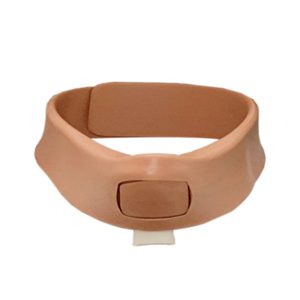In the realm of horology, few nations boast a legacy as rich and storied as Germany. Among the many distinctions of German watchmaking, the hand-wound watch stands out as a symbol of craftsmanship, precision, and dedication to tradition. As we delve into the world of hand-wound German watches, we will explore their history, their craftsmanship, and why they continue to enchant watch enthusiasts to this day.
A Brief History of Watchmaking in Germany
Germany’s watchmaking history dates back to the 16th century, with the introduction of precision timepieces in the southern regions of the country. The traditions established in cities such as Glashütte have continued to shape the landscape of watchmaking. In the 19th century, the establishment of the Glashütte watchmaking school revolutionized the craft, ensuring that mastery of techniques passed through generations. Hand-wound movements, characterized by their mechanical beauty, quickly gained popularity as artisans honed their skills to create pieces that transcended mere timekeeping, becoming artworks in their own right.
The Craftsmanship Behind Hand-Wound Movements
Hand-wound movements require a level of precision and artistry that is distinctly German. Each component of a hand-wound watch is meticulously crafted and assembled by skilled watchmakers. These artisans possess an in-depth knowledge of mechanical systems and a passion for perfection.
The process begins with the design phase, where the watchmaker sketches out the movement’s intricacies. Every cog, gear, and spring is designed to fit perfectly within the system. German-made movements are often noted for their large balance wheels and durable materials, ensuring accuracy and longevity.
Once the design is finalized, individual parts are manufactured. It is essential for every piece to meet strict quality standards. These components undergo rigorous testing before they are assembled by hand into the final product. The assembly of a hand-wound watch can take countless hours, with skilled artisans spending time adjusting components to achieve the perfect balance of functionality and aesthetics.
Why Choose a Hand-Wound Watch?
Hand-wound watches offer a unique experience that is markedly different from their automatic or quartz counterparts. For many enthusiasts, the act of winding the watch becomes a ritual, a moment of connection between the wearer and the timepiece. Hand-wound watches tend to have slimmer profiles than automatics, making them ideal for dress occasions or those who prefer a lighter feel on the wrist.
Moreover, hand-wound movements often feature stunning exhibition case backs, allowing wearers to admire the intricate craftsmanship. This visibility transforms the watch from a simple timekeeping device into a piece of wearable art. For those passionate about engineering and design, the beauty of a hand-wound movement is a constant source of inspiration.
Iconic Hand-Wound German Watch Brands
When discussing hand-wound German watches, certain brands emerge as icons of quality and craftsmanship. Companies like A. Lange & Söhne and Glashütte Original have dedicated their legacies to producing exceptional timepieces that embody the spirit of German watchmaking.
A. Lange & Söhne
Founded in 1845 by Ferdinand Adolph Lange, A. Lange & Söhne is synonymous with luxury. The brand is renowned for its attention to detail and traditional production methods. Their hand-wound models, such as the Lange 1, showcase a unique and elegant design paired with exemplary movement architecture that is truly exceptional.
Glashütte Original
As another cornerstone of German watchmaking, Glashütte Original brings innovation and expertise to the craft. Their hand-wound models, like the Senator and the Sixties series, cleverly combine modern technology with classic aesthetics, appealing to a wide audience who appreciate both heritage and innovation in design.
Collectibility and Investment Value
Hand-wound German watches have increasingly become collectible items. Their limited production numbers, impeccable craftsmanship, and the reputation of established brands contribute to their investment potential. Enthusiasts recognize that these watches not only serve as functional tools but also as heirlooms and pieces of history. Over time, certain models have seen significant appreciation in value, making them not just a purchase, but a wise investment.
Maintaining Your Hand-Wound Watch
To prolong the life of a hand-wound watch, proper maintenance is key. Regular winding is essential, as it keeps the movement functioning smoothly. It’s recommended to wind your watch at the same time each day to create a consistent routine.
Additionally, periodic servicing by a certified watchmaker ensures that any necessary adjustments or repairs are made to preserve the timepiece’s integrity. A well-maintained hand-wound watch can last for generations, telling not just time but stories of craftsmanship and dedication.
The Future of Hand-Wound Watches
As technology continues to advance, the appeal of hand-wound watches remains strong among enthusiasts. The appreciation for mechanical watches, particularly hand-wound models, is witnessing a renaissance, with younger collectors drawn to the allure of craftsmanship and the story behind each piece.
The future of hand-wound German watches looks bright, with brands continually innovating while remaining true to their roots. Watchmakers are exploring new materials and techniques, ensuring that the art of hand-winding will continue to thrive in an increasingly automation-driven world.
So whether you are a seasoned collector or new to the world of horology, investing in a hand-wound German watch is an invitation to become part of a timeless tradition that celebrates artistry and precision. With each tick, you participate in a story that bridges centuries, reflecting not just the passage of time but also the mastery of human craftsmanship.

 Wearable Cricothyroid Puncture Model
Wearable Cricothyroid Puncture Model